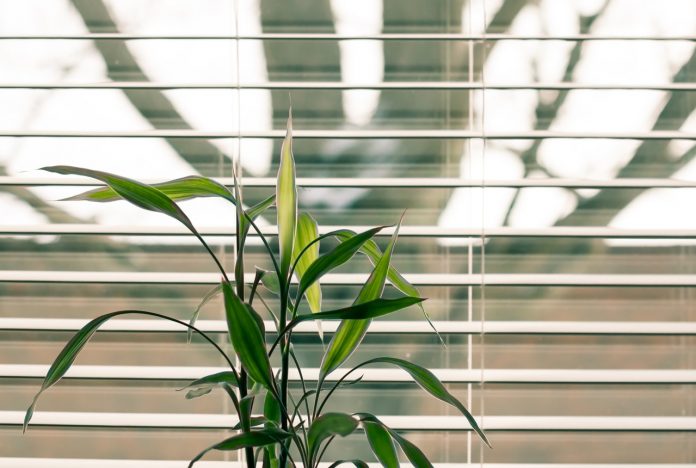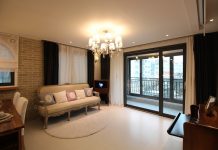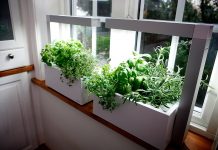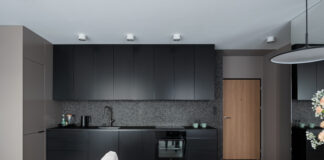You can choose window treatments or coverings not only for decoration but also for saving energy. Some carefully selected window treatments can reduce heat loss in the winter and heat gain in the summer. Window treatments, however, aren’t effective at reducing air leakage or infiltration. You need to caulk and weatherstrip around windows to reduce air leakage.
Awnings
Window awnings can reduce solar heat gain in the summer by up to 65% on south-facing windows and 77% on west-facing windows. You can use an awning to shade one window or have an awning custom-made to shade the entire side of your house.
In the past, most awnings were made of metal or canvas, which need to be re-covered every five to seven years. Today, awnings are made from synthetic fabrics such as acrylic and polyvinyl laminates that are water-repellent and treated to resist mildew and fading. Whatever the fabric, you should choose one that is opaque and tightly woven. A light-colored awning will reflect more sunlight.
Awnings require ventilation to keep hot air from becoming trapped around the window. Grommets (eyelets) or other openings along the tops and sides of an awning can provide ventilation. The awning may also open to the sides or top to vent hot air.
You can roll up adjustable or retractable awnings in the winter to let the sun warm the house. New hardware, such as lateral arms, makes the rolling up process quite easy.
Blinds
Window blinds—vertical or horizontal slat-type—are more effective at reducing summer heat gain than winter heat loss.
Interior Blinds
Because of the numerous openings between the slats, it’s difficult to control heat loss through interior window blinds, but the slats offer flexibility in the summer. Unlike shades, you can adjust the slats to control light and ventilation. For example, when completely closed and lowered on a sunny window, highly reflective blinds can reduce heat gain by around 45%. They can also be adjusted to block and reflect direct sunlight onto a light-colored ceiling. A light-colored ceiling will diffuse the light without much heat or glare.
Exterior Blinds
Exterior roller blinds are usually made of wood, steel, aluminum, or vinyl. They’re mounted above the window, and side channels guide them as they’re lowered and raised. When you lower these blinds completely, their slats meet and provide shade. If partially raised, the blinds allow some air and daylight to enter through windows.
Draperies
A drapery’s ability to reduce heat loss and gain depends on several factors, including fabric type (closed or open weave) and color. With such a wide variety of draperies available, it’s difficult to generalize about their energy performance.
During summer days, you should close draperies on windows receiving direct sunlight to prevent heat gain. Studies demonstrate that medium-colored draperies with white-plastic backings can reduce heat gains by 33%. Draperies also stay cooler in the summer than some other window treatments because their pleats and folds lose heat through convection.
When drawn during cold weather, most conventional draperies can reduce heat loss from a warm room up to 10%. Therefore, in winter, you should close all draperies at night, as well as draperies that don’t receive sunlight during the day.
To reduce heat exchange or convection, draperies should be hung as close to windows as possible. Also let them fall onto a windowsill or floor. For maximum effectiveness, you should install a cornice at the top of a drapery or place the drapery against the ceiling. Then seal the drapery at both sides and overlap it in the center. You can use Velcro or magnetic tape to attach drapes to the wall at the sides and bottom. If you do these things, you may reduce heat loss up to 25%.
Two draperies hung together will create a tighter air space than just one drapery. One advantage is that the room-side drapery will maintain around the same temperature as the interior space, adding to a room’s comfort.
High-Reflectivity Films
High-reflectivity window films help block summer heat gain. They are best used in climates with long cooling seasons, because they also block the sun’s heat in the winter.
The effectiveness of these reflective films depends on:
- Size of window glazing area
- Window orientation
- Climate
- Building orientation
- Whether the window has interior insulation.
Silver, mirror-like films typically are more effective than the colored, more transparent ones. East- and west-facing windows, because of their greater potential for heat gain, can benefit more from these films. North-facing windows won’t benefit from them, and south-facing windows may benefit somewhat, but the benefit could be offset by the reduction of heat from the winter sun.
These films have some overall disadvantages:
- Impaired outside visibility
- Extra care required for cleaning
- Reflections.
Insulated Panels
An insulating window panel or pop-in shutter typically consists of a core of rigid foam board insulation. You can push or clip it into the interior of a window. The panels are made so that their edges seal tightly against the window frame. Seals can be made from magnetic tape or Velcro. No hardware, such as hinges or latches, is required.
Insulating window panels have R-values between 3.8 and 7. They are also fairly inexpensive, whether you buy a kit or make your own, but you will need space to store them when they’re not in use.
Mesh Window Screens
Mesh window screens can diffuse solar radiation, reducing heat gain in the summer. Screens should be mounted in an exterior frame and should cover entire windows. They are particularly effective on east- and west-facing windows.




















